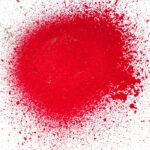When getting into airbrushing, there’s a confusing amount of different paints and additives to learn about. One of the mind-boggling questions you’re sure to have is “what is the difference between airbrush thinner and airbrush cleaner?” and “can you use them interchangeably?”
In most cases, you can use airbrush thinner as an airbrush cleaner, but you can’t always use airbrush cleaner as an airbrush thinner. This is because airbrush cleaner is made to break down paint while airbrush thinner is made to bind and reduce the consistency of the paint mixture.
If you have trouble telling the difference between these products, you’re not alone. This article goes through the different types of airbrush products referred to as “cleaners” and “thinners” and how to use them to the greatest effect.

What is the Difference Between Airbrush Cleaner and Airbrush Thinner?

The difference between airbrush cleaner and thinner can very often come down to an issue of semantics and labeling. This means that some airbrush cleaners are really just thinners that are labeled as a “cleaner”.
Similarly, some airbrush thinners make really good airbrush cleaners (even more so than the substances labeled as “cleaners”).
Therefore, what really matters is the contents inside the container and how they affect your airbrush operation.
NOTE: Airbrush thinner is commonly referred to as airbrush reducer.
A good rule of thumb is to use products labeled as “airbrush cleaners” only for cleaning your airbrush. The reason being is that cleaners can break down your paint mixture and make for a very sloppy and watery consistency – one that will make your airbrush art suffer tremendously.
Products labeled as “airbrush thinner” (or reducer), on the other hand, may be used as cleaners. The worst that can happen is that they won’t be as effective of a cleaning agent as you might get with another product. In fact, some “airbrush thinners” are actually better at cleaning than “airbrush cleaners!”
To further suss out the distinction between airbrush cleaners and thinners, let’s look at the main purposes of these products.
Iwata Medea Airbrush Cleaner
Airbrush cleaners are used for switching between colors and for scrubbing the airbrush clean after usage.
The main purpose is to break down any paint in the hopper, feed, or nozzle cap areas. Sometimes dry bits of paint can become lodged in the feeding path and airbrush cleaner can help dissolve and dislodge them. This is important so that the nozzle doesn’t become clogged, the paint stream remains uninhibited, and colors don’t mix unintentionally.
Some airbrush cleaners are made with a soapy mixture to help dissolve paint. This makes them great at cleaning airbrushes, but not very good thinners. A good example of this is the Iwata-Medea Airbrush Cleaner – it’s an amazing cleaner, but will break down your paint mixture instead of reducing and thinning it properly.
Conversely, some products labeled as airbrush “thinner” or “reducer” also work great for cleaning. This is because they have such great dissolving properties that they can get those pesky dry bits out of tight places.
This article about the best airbrush cleaners will give you more info on airbrush products that can double as cleaners and thinners.
What Makes a Great Airbrush Thinner
Createx Water Based Reducer
Great airbrush thinner (also called reducer) will make paint flow out of your nozzle like a slip & slide covered in vaseline. When trying to improve finesse and precision in your airbrush art, paint flow is everything.
Thinners are specific to the paint medium. Solvent-based paint requires solvent-based thinner and water-based paint requires water-based thinner. Additionally, there are often slight composition differences in airbrush paints and thinners between brands.
Therefore, matching your airbrush thinner with the corresponding paint and brand will yield better results than using one product universally.
For example, if you are using Createx Water Based Acrylics, you should also use a Createx Water Based Reducer.
Is Airbrush Thinner Mandatory?
A general rule of thumb is to thin your airbrush paint at a 10% ratio of thinner to paint
Airbrush thinner is not always needed in your airbrush paint. Some paints will flow just fine out of the nozzle without thinning them.
However, some paints are almost guaranteed to clog the nozzle without carefully thinning.
Generally speaking, water-based airbrush paint is thicker than solvent-based airbrush paint and is more likely to need some thinning.
Color pigments play into the paint thickness as well. A very thick pigment such as white will often need more thinning than other colors.
A general rule of thumb is to thin your airbrush paint at a 10% ratio of thinner to paint. If the paint is quite thick, use a little more thinner. If the paint is already thin, use less or don’t use any at all.
At the end of the day, it’s as much an art as it is a science so some trial and error will be needed to dial in your paint consistency just how you like it.
Hopefully this article has helped clear up the differences between airbrush cleaner and airbrush thinner. At the end of the day, airbrushing is about experimenting.
The best way to know how well a thinner will work as a cleaner or to know if a cleaner is also a thinner is to try it out!
I wouldn’t recommend a trial period while painting your next masterpiece. But trying a small amount of each product beforehand will give you a first-hand reference for how they react with your paint and airbrush. This reference experience will be far more valuable than any label or description you could read online.
Hope this helps! Let’s get airbrushing!




